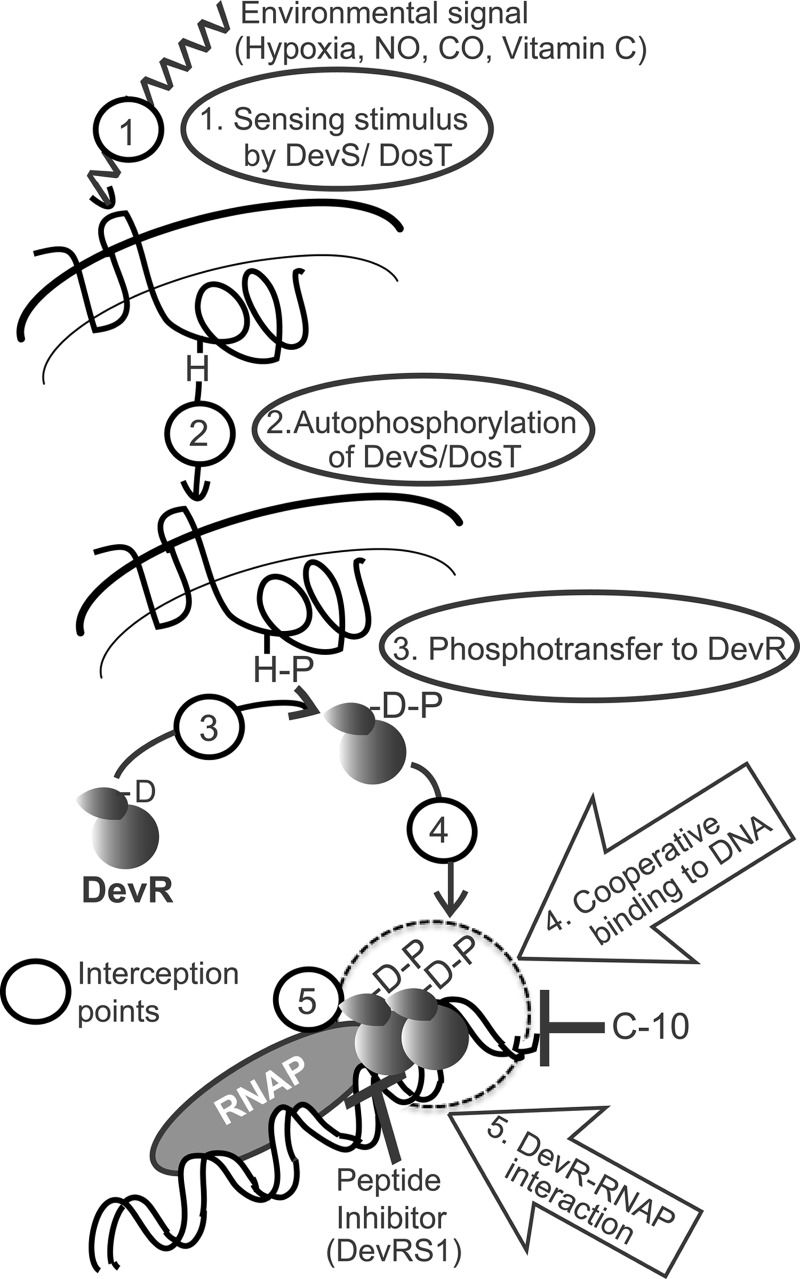FIG 6.
Interception steps in the DevR signaling cascade. Hypoxia, NO, CO, and ascorbic acid are sensed by DosT and DevS (interception step 1), resulting in their activation by autophosphorylation (interception step 2). Transfer of phosphosignal from these sensors to DevR leads to its phosphorylation and its activation (interception step 3). Activated DevR binds to target gene promoters and triggers regulon activation (interception step 4). Step 4 is the target of the C-10 molecule, which inhibits DevR function and hypoxic survival of M. tuberculosis (36). Cooperative interaction of DevR with DNA is required for full gene activation (13, 19), and this is a novel interception step (step 4). Peptide inhibitor DevRS1 inhibits DevR-dependent gene expression and hypoxic viability (18) and likely intercepts the signaling cascade at step 5. The dashed circle indicates the DevR-DNA-RNA polymerase interaction interface. Here we describe that targeting DevR-SigA interaction is a new and novel strategy for the blockade of DevR signaling (interception step 5) and is an antibacterial strategy. Steps 4 and 5 are novel points for interception.

